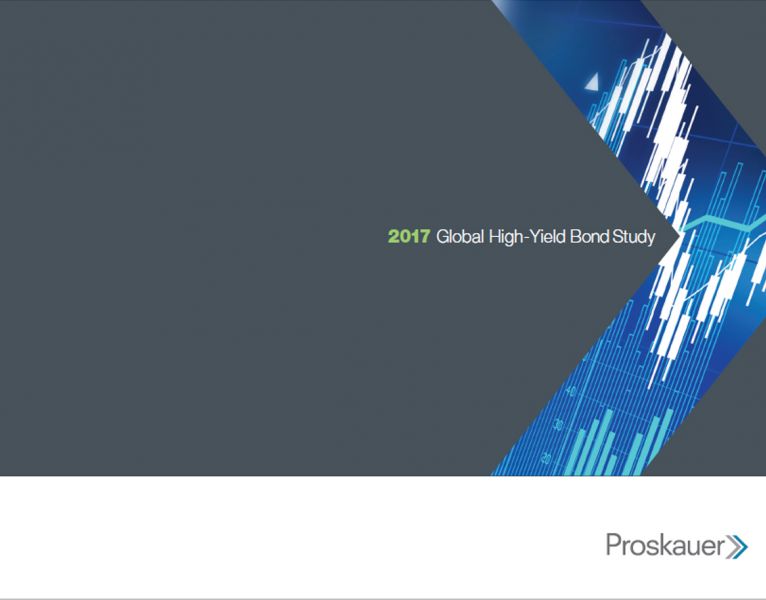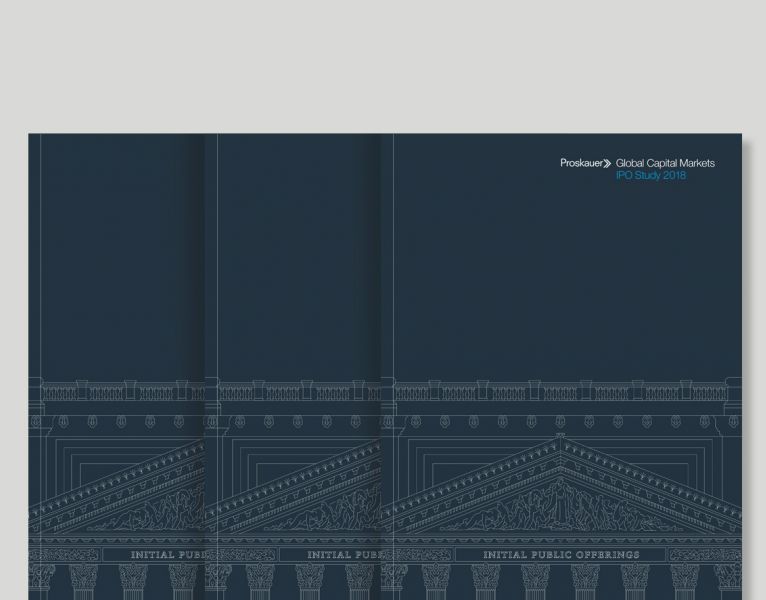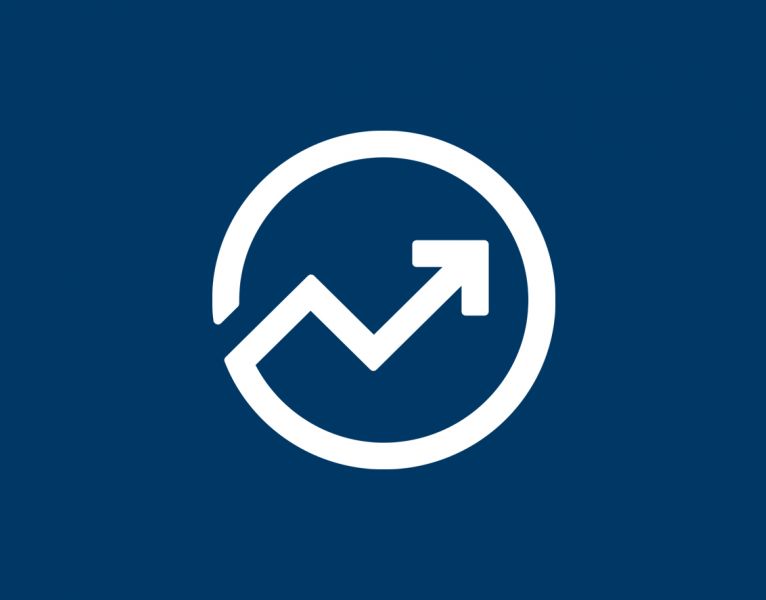May 22, 2018 (New York) – Providing dealmakers, issuers and investors with an in-depth look at deal terms and trends in the high-yield bond market, Proskauer released its 2018 Global High-Yield Bond Study.
The study, conducted by the Leveraged Finance Group, covers high-yield bond deals closed globally between 2013 and 2017, drawing on data from Proskauer’s extensive proprietary database of approximately 2,000 high-yield deals since 2011. The report categorizes deals by geography, deal size, industry, credit rating and whether they are backed by private equity sponsors.
“Our Study continues to be a valuable resource for banks, sponsors, issuers and purchasers of high yield bonds. Pulling from over 120 fields in our proprietary database, the study not only provides a detailed analysis of the key terms in high-yield bond deals, but it also allows us to identify trends and new terms entering the market and, in many ways, project the incidence of those terms over the near term,” said Justin Breen, head of Proskauer’s Leveraged Finance Group and partner in the Global Capital Markets Group.
Noteworthy observations that are detailed in the 2018 study include:
- High-yield deal volume rebounds in 2017. Activity in the global market for high-yield bonds rebounded in 2017. Global high-yield deal count increased to 851 deals in 2017, representing an increase of 66% from 2016’s 521 deals. In particular, deals with an issue size of $500 million or less increased to 510 deals (or 60% of the global market), from just 284 deals in 2016, signaling a potential comeback for the “middle market” high yield product.
- A pause in the 2016 “drag effect”. In 2016, we observed that non-sponsor-backed issuers achieved higher instances of certain flexibilities often reserved for sponsor-backed issuers in prior years. That appears to have been an anomaly with respect to certain terms and the “catching up” that non-sponsor backed issuers achieved in 2016 seems to have reverted, again resulting in meaningfully more flexible terms for sponsor-backed issuers. For example, in 2017 the percentage of non-sponsor backed deals allowing the issuer to make unlimited restricted payments subject to a pro forma leveraged test decreased to 41% of deals, a 35% decline from 2016 while 71% of sponsor-backed issuers retained this flexibility.
- Newer terms that entered the mainstream in recent years appear here to stay. Certain terms continued to be prevalent in the global high yield market in 2017, such as the percentage of deals permitting an equity claw of greater than the traditional 35%, the percentage of deals requiring 30% of noteholders to accelerate after an event of default (as opposed to the more traditional 25%), and the percentage of deals that have a change of control portability feature.
- Continued shift toward private-for-life. In 2017, 82% of U.S. high-yield deals were private-for-life, compared to 63% in 2016. Perhaps an even more convincing trend is that the percentage of U.S. high-yield deals that are private-for-life has increased by 91% since 2013, when only 43% of U.S. deals were private-for-life. The increase was mainly driven by medium and large sized deals and also deals with a single B rating or better.
- Rise in second-priority lien deals and split lien deals. While the percentage of deals globally and in the U.S. that were done on a secured basis remained relatively flat year-over-year, there was a notable increase in second-priority lien deals and split lien deals in 2017, reversing a three-year trend towards first-lien priority deals from 2014-2016. This trend reversal was largely driven by the U.S. market, which saw a meaningful uptick in split lien deals.



